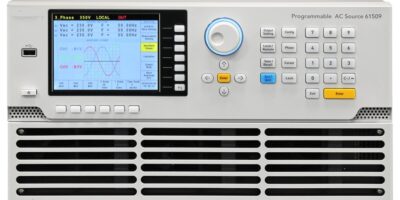The Education Projector Market is a segment within the broader projector industry that specifically caters to educational institutions such as schools, colleges, universities, and training centers. These projectors are designed to enhance learning experiences by displaying visual content such as presentations, videos, and interactive materials to a large audience in classrooms or auditoriums.
Historical Developments: The education projector market has evolved significantly over the years in tandem with advancements in display technology and educational methodologies. Initially, projectors were bulky, low-resolution devices primarily used for basic presentations. However, with the advent of digital projectors, there was a paradigm shift towards higher resolutions, improved brightness, enhanced connectivity options, and interactive features. Over time, manufacturers have focused on making projectors more user-friendly, durable, and cost-effective to meet the specific needs of educational institutions.
Trends: Several trends have shaped the education projector market in recent years:
- Integration of Interactive Features: Projectors with interactive capabilities, such as touchscreen functionality and interactive pens, have gained popularity as they promote active learning and engagement among students.
- Wireless Connectivity: There is a growing demand for projectors that support wireless connectivity, allowing teachers and presenters to easily stream content from their devices without the need for cables.
- Portable and Ultra-short Throw Projectors: Compact and ultra-short throw projectors have become popular choices for classrooms with limited space, as they can be easily installed close to the screen or whiteboard, minimizing shadows and obstructions.
- LED and Laser Light Source: LED and laser projectors are replacing traditional lamp-based models due to their longer lifespan, lower maintenance requirements, and better energy efficiency.
- Integration with Education Software: Projector manufacturers are partnering with educational software developers to offer integrated solutions that enhance teaching and learning experiences.
Product Portfolio: The product portfolio of education projectors includes a range of models differentiated based on factors such as brightness, resolution, throw distance, interactive capabilities, and connectivity options. Manufacturers offer entry-level, mid-range, and high-end projectors to cater to the diverse needs and budgets of educational institutions.
Production Mode & Process: The production of education projectors typically involves several stages, including research and development, design, sourcing of components, manufacturing, quality control, and distribution. Most manufacturers utilize automated assembly lines and advanced production techniques to ensure efficiency and consistency in product quality. Additionally, stringent quality control measures are implemented to meet industry standards and regulatory requirements.
Restraints: Despite the growth opportunities, the education projector market faces certain challenges:
- Budget Constraints: Educational institutions, particularly in developing countries, may have limited budgets for investing in projector technology, which can constrain market growth.
- Competition from Display Technologies: Alternatives such as interactive flat panels and LED/LCD displays pose a competitive threat to traditional projectors in the education sector.
- Maintenance Costs: While LED and laser projectors offer cost savings in the long run, the initial purchase price and maintenance costs may deter some institutions from adopting these technologies.
- Technical Challenges: Integrating complex features such as wireless connectivity and interactive capabilities into projectors may pose technical challenges and increase production costs.
Data Triangulation: Market research firms, industry associations, government publications, company reports, and academic journals are common sources used to triangulate data and validate market trends, forecasts, and consumer preferences in the education projector market. Analyzing data from multiple sources helps in reducing biases and ensuring the accuracy of market assessments.
Receive the FREE Sample Report of Education Projector Market Research Insights @ https://stringentdatalytics.com/sample-request/education-projector-market/11037/
Market Segmentations:
Global Education Projector Market: By Company
• Epson
• BenQ
• Panasonic
• NEC
• Optoma
• Sony
• Acer
• ViewSonic
• Casio
• InFocus
• Canon
• Hitachi
• Richo
• Mitsubishi Electric
• Delta Electronics
• Christie
• Sharp
• Dell
• JVC
• Boxlight
• Eiki Industrial
• Honghe Tech
• Appotronics Corporation
• Henan Costar Group
Global Education Projector Market: By Type
• DLP Education Projectors
• LCD Education Projectors
• Others
Global Education Projector Market: By Application
• Preschool Education
• K-12 Education
• Higher Education
• Others
Regional Analysis of Global Education Projector Market
All the regional segmentation has been studied based on recent and future trends, and the market is forecasted throughout the prediction period. The countries covered in the regional analysis of the Global Education Projector market report are U.S., Canada, and Mexico in North America, Germany, France, U.K., Russia, Italy, Spain, Turkey, Netherlands, Switzerland, Belgium, and Rest of Europe in Europe, Singapore, Malaysia, Australia, Thailand, Indonesia, Philippines, China, Japan, India, South Korea, Rest of Asia-Pacific (APAC) in the Asia-Pacific (APAC), Saudi Arabia, U.A.E, South Africa, Egypt, Israel, Rest of Middle East and Africa (MEA) as a part of Middle East and Africa (MEA), and Argentina, Brazil, and Rest of South America as part of South America.
Click to Purchase Education Projector Market Research Report @ https://stringentdatalytics.com/purchase/education-projector-market/11037/
Purchasing a report on the Education Projector Market can offer valuable insights and benefits for various stakeholders, including:
- Market Understanding: The report provides a comprehensive analysis of the education projector market, including historical trends, current dynamics, and future projections. It offers a detailed overview of market size, growth drivers, challenges, and opportunities, helping stakeholders understand the market landscape and make informed decisions.
- Competitive Intelligence: By studying the competitive landscape outlined in the report, stakeholders can gain insights into key players, their market share, strategies, product offerings, and recent developments. This information enables them to benchmark their performance against competitors and identify areas for differentiation and improvement.
- Strategic Planning: Armed with insights from the report, companies can formulate effective strategies to capitalize on market trends and opportunities. Whether it’s expanding into new regions, launching innovative products, or targeting specific customer segments, the report can guide strategic decision-making and resource allocation.
- Investment Decisions: Investors and financial institutions can use the report to assess the attractiveness of the education projector market for investment purposes. By evaluating market trends, growth prospects, competitive dynamics, and regulatory factors, they can make informed investment decisions and mitigate risks.
- Product Development: Manufacturers and technology providers can leverage the report’s insights to tailor their product portfolios to meet the evolving needs of educational institutions. Understanding market demand, emerging technologies, and customer preferences can guide product development efforts and enhance competitiveness.
- Policy Formulation: Government agencies and policymakers can utilize the report to formulate policies and initiatives aimed at promoting the adoption of projector technology in educational settings. By understanding market dynamics and challenges, they can design interventions to address barriers and facilitate market growth.
- Educational Institutions: Schools, colleges, and universities can benefit from the report by gaining insights into the latest trends and best practices in projector technology. It can help them make informed procurement decisions, optimize technology investments, and enhance teaching and learning experiences.
About Stringent Datalytics
Stringent Datalytics offers both custom and syndicated market research reports. Custom market research reports are tailored to a specific client’s needs and requirements. These reports provide unique insights into a particular industry or market segment and can help businesses make informed decisions about their strategies and operations.
Syndicated market research reports, on the other hand, are pre-existing reports that are available for purchase by multiple clients. These reports are often produced on a regular basis, such as annually or quarterly, and cover a broad range of industries and market segments. Syndicated reports provide clients with insights into industry trends, market sizes, and competitive landscapes. By offering both custom and syndicated reports, Stringent Datalytics can provide clients with a range of market research solutions that can be customized to their specific needs.
Reach US
Stringent Datalytics
+1 346 666 6655
Social Channels:
Linkedin | Facebook | Twitter | YouTube



Leave a Reply